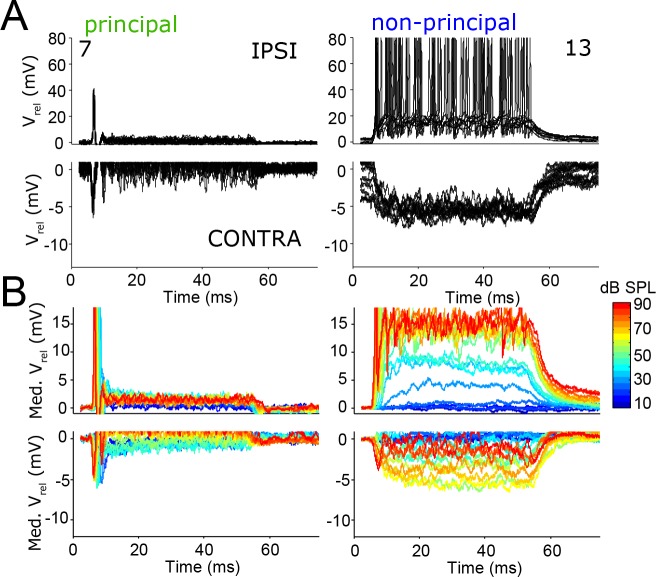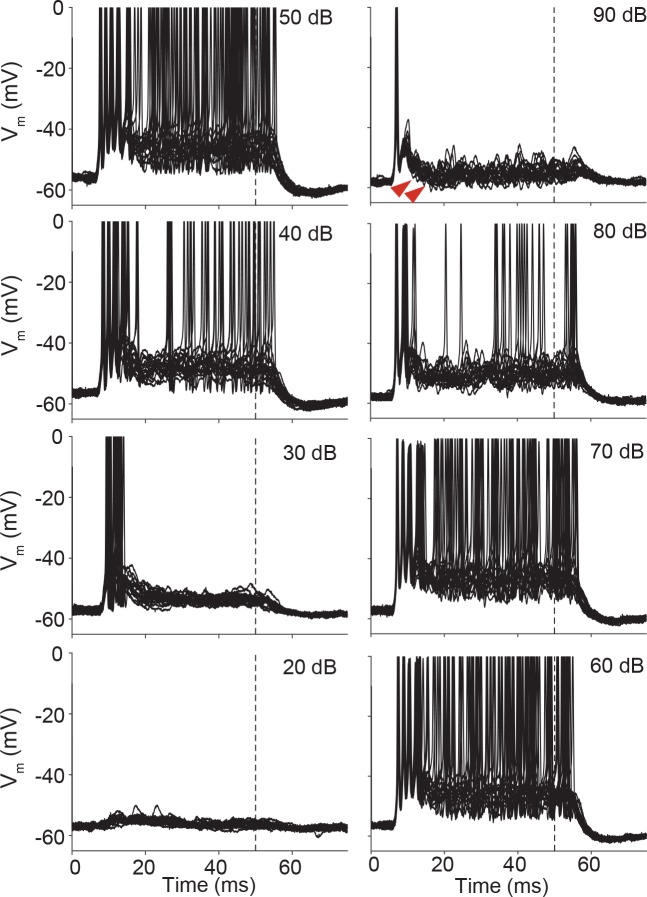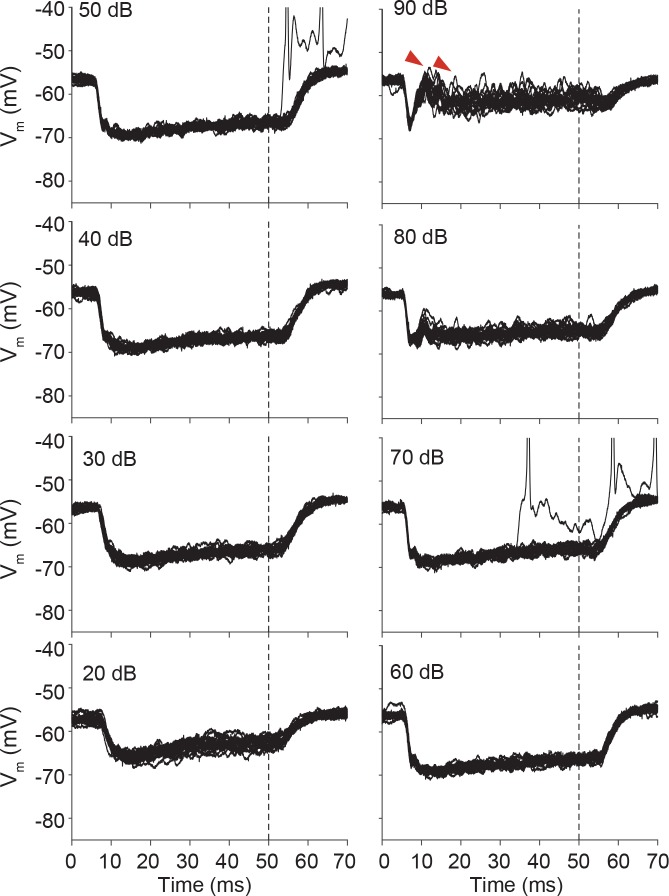(A) Top panel: Maximal depolarization during onset (5–15 ms post stimulus onset) for averaged responses to ipsilateral tones, as a function of sound level. Spikes occurring in or bordering intervals defined as onset (5–15 ms post stimulus onset) or sustained (40–50 ms post stimulus onset) were not included in the averages. Bottom panel: Maximal hyperpolarization during onset for averaged responses to contralateral tones, as a function of sound level. Data shown for 12 neurons. (B) Similar to A, for the sustained part of averaged subthreshold responses (40–50 ms post stimulus onset; for two neurons, 25 ms tones were used and the sustained part is calculated from 20 to 25 ms post stimulus onset). (C) Ratio of peak vs. sustained depolarization during ipsilateral tones as a function of the ratio of peak vs. sustained hyperpolarization during contralateral tones, for the same data as in A/B. Diagonal line indicates identity. (D) Maximal spike rate during ipsilateral tones versus the largest hyperpolarization during contralateral tones, for 11 neurons. Different symbols indicate different cells, where the same symbol corresponds to the same cell in each panel.




